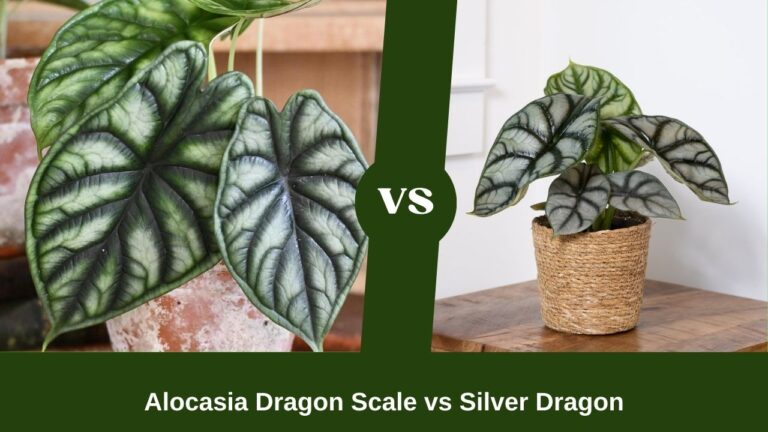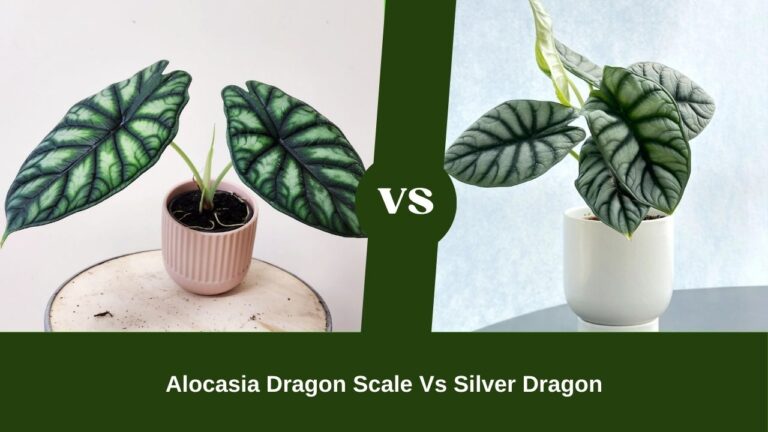All Essential Alocasia Golden Dragon Care Tips
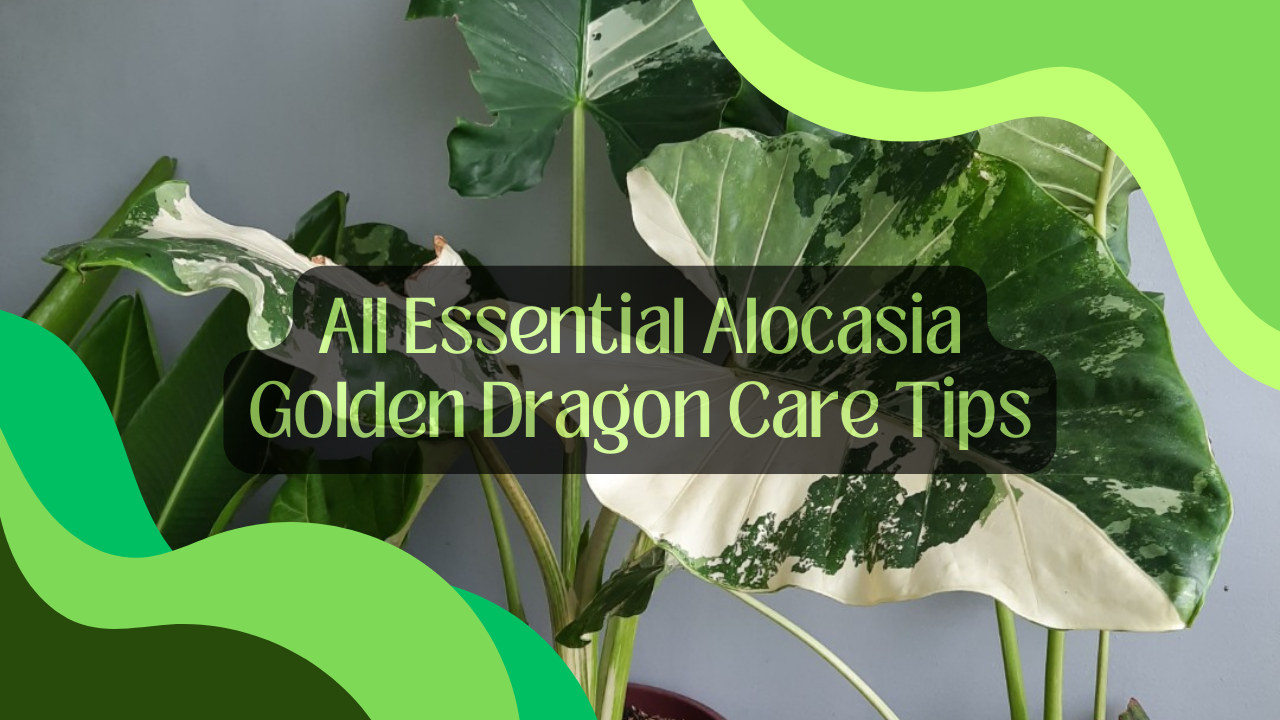
If you’re looking to care for your Alocasia Golden Dragon, think of it like tending to a delicate orchid. This stunning plant, with its striking leaves and unique patterns, requires a bit of extra love and attention to thrive in your home.
Well then, how to take care of Alocasia Golden Dragons? Propagating and potting regularly will boost health. But of course, with the right lighting, watering, humidity, temperature, and fertilizing routine. Keep your eyes on this article to have an in-depth idea.
So, let’s explore the secrets behind successfully nurturing this majestic beauty and unlock the full potential of your Alocasia Golden Dragon.
Table of Contents
Pruning And Propagation Techniques for Alocasia Golden Dragon
Regular pruning and propagation techniques are essential for maintaining the health and appearance of your Alocasia Golden Dragon. Pruning helps control the plant’s size and shape, ensuring it stays compact and bushy.
- Start by removing any dead or yellowing leaves, and cutting them off at the base of the stem.
- Trim back any leggy or overgrown stems to encourage new growth.
Propagation is a great way to expand your Alocasia Golden Dragon collection or share it with friends. You can propagate through division or stem cuttings. To divide, carefully separate the plant into smaller sections, making sure each section has roots attached.
- For stem cuttings, take a healthy stem with a few leaves and place it in a glass of water until the roots develop.
- Once the roots are established, you can transfer the cutting to a pot with well-draining soil.
With regular pruning and propagation, your Alocasia Golden Dragon will thrive and continue to bring beauty to your space.
While propagating, pruning, and shaping are really important. Now, let’s know pruning and shaping techniques, in a nutshell.
Pruning
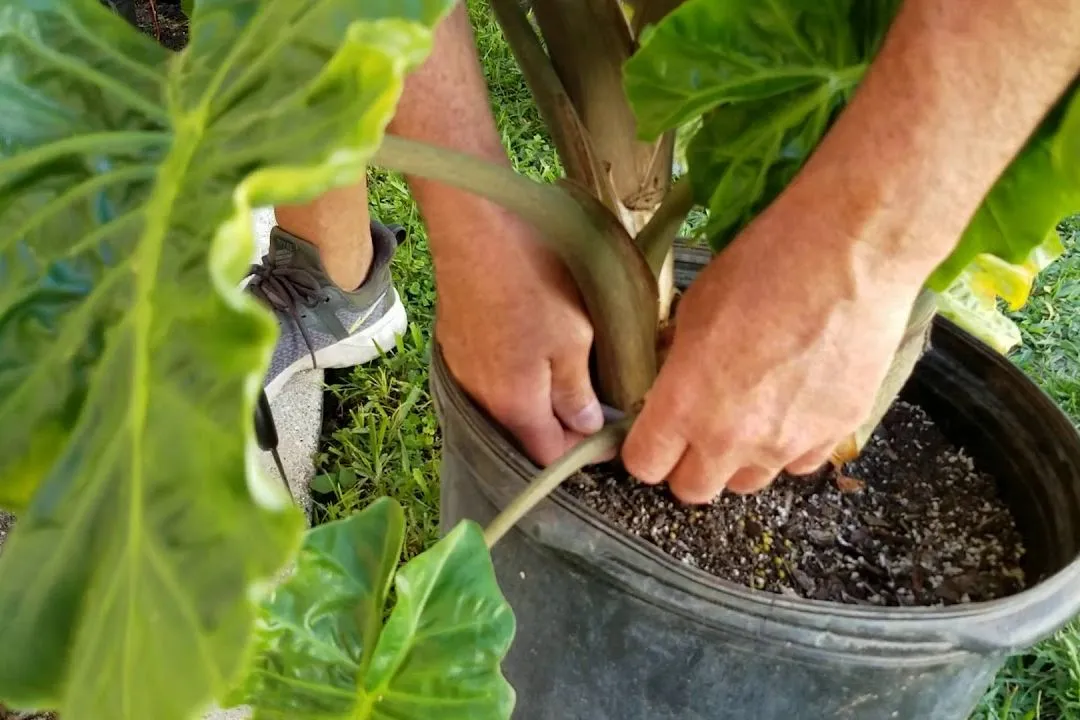
- Pruning is important for directing growth and maintaining an attractive shape for indoor plants. It should be done regularly through the growing season.
- Use clean, sharp pruners or scissors to make cuts. Sterilize tools between plants with rubbing alcohol to avoid spreading disease.
- Prune just above leaf nodes where new growth can emerge. Remove dead or damaged growth at any time.
- Pinching back tip growth will promote bushier, compact plants. Pruning leggy stems back to just above a node can help reshape them.
- Remove yellowed, dried-out leaves and stems which can drain energy from the plant. Also, prune congested growth for better air circulation.
Shaping

- Plants like philodendrons and pothos can be shaped by training stems along supports. Use plant ties or hooks to gently bend vines in the desired direction.
- Rotate potted plants frequently to promote even growth on all sides, preventing one-sided shapes.
- Pinching out the central stem tip can create a bushy, rounded shape that’s fuller. Removing side shoots has the opposite effect.
- For hanging plants, prune downward-facing stems shorter to prevent straggly growth underneath. Even out top growth for symmetry.
- Be patient! It may take some time and repeated pruning for shaping to be achieved. But it’s very rewarding.
Regular, careful pruning encourages healthy, shapely growth in indoor plants. Combined with training techniques, it can create stunning displays. Let me know if you need any other tips!
Related articles:
- 3 Methods of Alocasia Propagation
- Perfect soil Mix for Alocasia
- 3 Fundamental Alocasia Pink Princess Care Tips
4 Must-Know Care Tips for Alocasia Dragon Care

Apart from propagation, there are some other must-follow things. These are –
- Maintaining lighting requirements
- Scheduled watering
- Humidity and temperature
- Fertilizing routine
Let me tell you about all these tips in depth.
Lighting Requirements
To ensure the proper growth and health of your Alocasia Golden Dragon, it’s essential to provide it with the right lighting conditions.
This beautiful plant thrives in bright, indirect light, making it perfect for well-lit rooms or areas near windows with sheer curtains. Avoid placing it in direct sunlight, as the intense rays can scorch its leaves.
However, don’t keep it in a completely dark or low-light environment either, as this can stunt its growth. Aim for a balance between light and shade.
If you notice that your Alocasia Golden Dragon’s leaves are turning yellow or drooping, it may be an indication that it’s receiving too much or too little light. Adjust its placement accordingly to ensure it receives the optimal amount of light for its needs.
Watering Schedule
Maintain the proper watering schedule to ensure the health and vitality of your Alocasia Golden Dragon.
This tropical plant requires consistent moisture, but overwatering can lead to root rot and other issues. The key is to keep the soil evenly moist, but not soggy.
Water your Alocasia Golden Dragon thoroughly, allowing excess water to drain out from the bottom of the pot. Then, wait until the top inch of soil feels slightly dry before watering again.
During the growing season, which is typically spring and summer, you may need to water your plant more often. However, in the winter months, when the plant is dormant, reduce watering and let the soil dry out a bit between waterings.
Humidity and Temperature Levels
To ensure optimal growth, it’s important to maintain appropriate humidity and temperature levels for your Alocasia Golden Dragon. This tropical plant thrives in high humidity levels between 60% and 80%.
You can increase humidity by placing a humidifier near the plant, misting it regularly, or placing a tray filled with water and pebbles underneath the pot.
As for temperature, the Alocasia Golden Dragon prefers a warm environment with temperatures between 65°F and 85°F (18°C to 29°C). Avoid exposing it to cold drafts or temperatures below 60°F (15°C), as this can lead to leaf damage.
Fertilizing Routine
As you care for your Alocasia Golden Dragon and ensure optimal humidity and temperature levels, it’s important to establish a regular fertilizing routine. Fertilizing provides essential nutrients that promote healthy growth and vibrant foliage.
During the growing season, which typically spans from spring to summer, you should fertilize your Alocasia Golden Dragon every two weeks. Choose a balanced, water-soluble fertilizer with a ratio of 20-20-20 or a similar composition. Dilute the fertilizer according to the package instructions and apply it to the soil around the plant, making sure to avoid direct contact with the leaves.
Remember to water your plant thoroughly after fertilizing to prevent salt buildup. However, during the dormant period in fall and winter, you can reduce the frequency of fertilization to once a month.
How Potting And Repotting Keep Alocasia in Steady Health?

Proper potting and repotting are crucial to maintaining the health of Alocasia plants. Using an airy, well-draining potting mix in a container with drainage holes provides the roots with sufficient airflow and prevents overwatering. Repotting into a slightly larger pot every 2-3 years relieves root congestion, encouraging new growth.
Alright, let’s get to know how to execute potting and repotting to your beloved Alocasia.
Potting New Plants
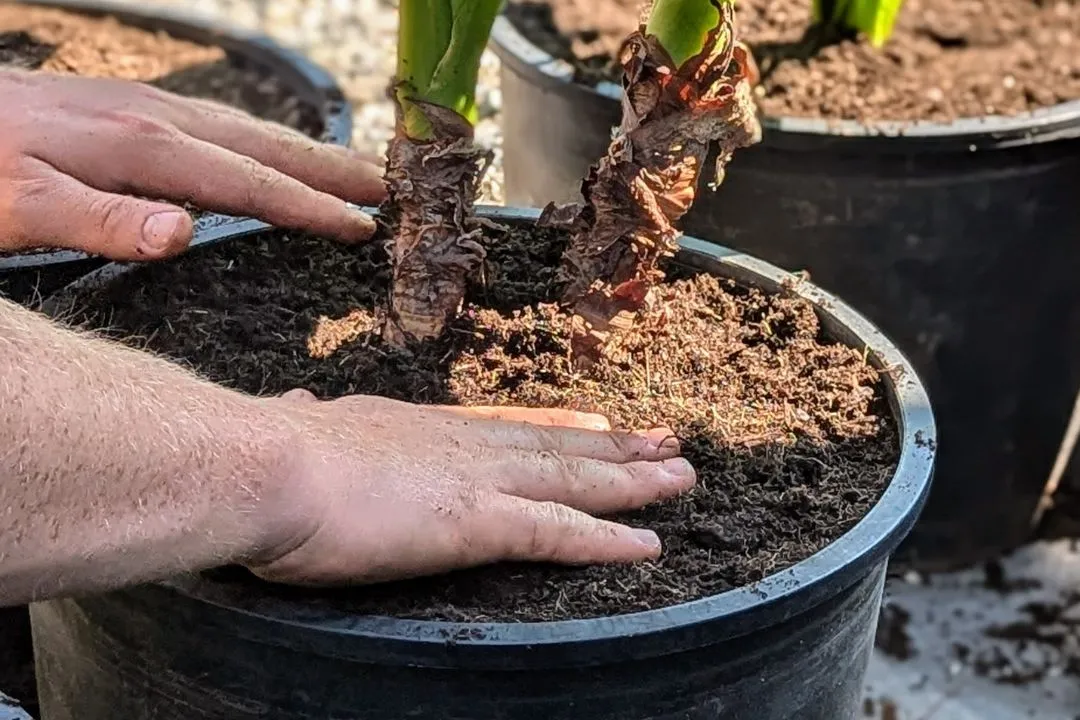
- Choose a pot with drainage holes that is slightly larger than the plant’s root ball. This will allow room for growth without leaving too much space for excess soil and water.
- Use a well-draining potting mix, such as one containing peat moss, perlite, vermiculite, or coconut coir. Avoid heavy clay soils that retain too much moisture.
- Carefully remove the plant from its nursery pot and loosen any circled roots. Place it in the new pot and add potting mix around the roots, firming it gently. Leave 1-2 inches at the top for watering.
Repotting Established Plants
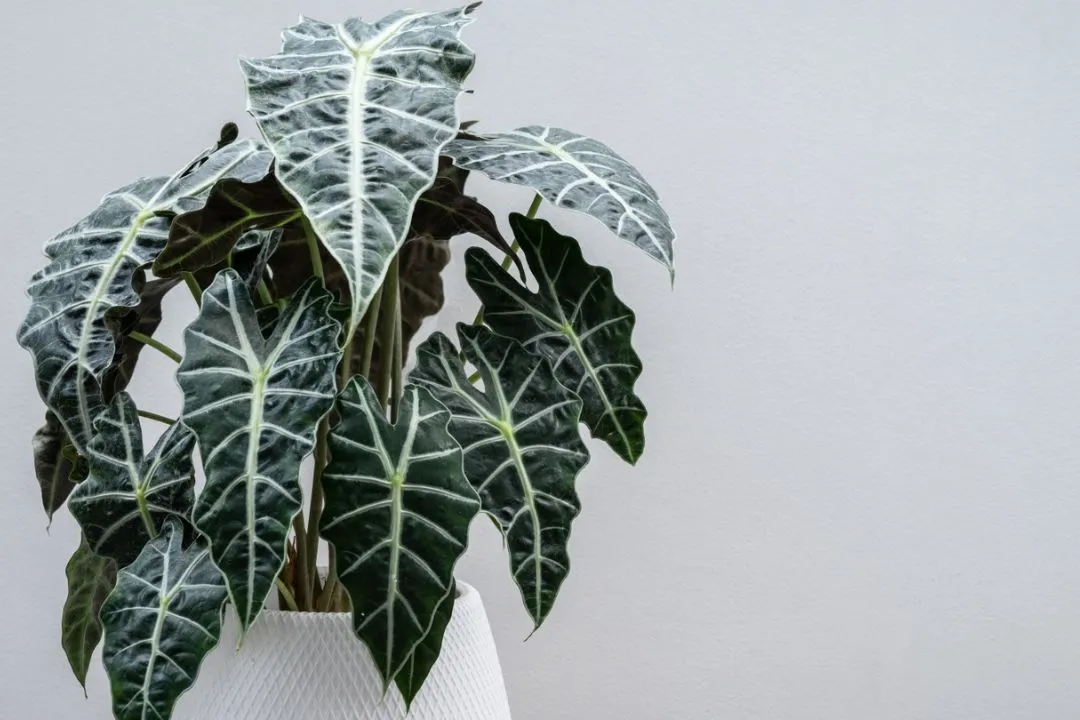
Repot plants when they become root-bound, which is visible as stunted growth and yellowing leaves. Ideally, repot every 1-2 years in the spring.
- Select a new pot that is only 2 inches larger than the current one. Going too large can cause problems with excess moisture.
- Gently remove the plant and loosen the root ball. Prune away any damaged roots.
- Partially fill the new pot with potting mix. Place the plant inside and fill in around the roots. Firm the soil gently.
- Water well after repotting and allow the plant to recover for a few weeks before resuming normal care.
The key is to choose an appropriately sized pot with drainage holes, use a well-draining soil mix, and be gentle when handling the roots to avoid damage. Repotting in the spring every year or two will keep most indoor plants healthy and thriving. Let me know if you need any clarification or have additional questions!
FAQs
To acknowledge you a little more, here are a group of question asked by the plant lovers all across the internet.
Q: How Often Should I Repot My Alocasia Golden Dragon?
You should report your Alocasia Golden Dragon when it outgrows its current pot, usually every 1-2 years.
This helps prevent root-bound issues and allows the plant to continue thriving in a larger container.
Q: Can Alocasia Golden Dragon Be Grown in Water?
Yes, the Alocasia Golden Dragon can be grown in water. It’s a great option if you want to avoid soil and prefer a hydroponic setup. Just make sure to change the water regularly to prevent stagnation.
Q: What Are the Common Pests and Diseases That Affect Alocasia Golden Dragon?
Common pests and diseases that can affect your Alocasia Golden Dragon include:
- Aphids
- Spider mites
- Fungal leaf spot
Regularly inspect your plant for signs of infestation or disease, and promptly treat any issues to keep your plant healthy.
Q: Can I Place My Alocasia Golden Dragon Outdoors During the Summer Months?
You can definitely place your Alocasia Golden Dragon outdoors during the summer months. Just make sure it’s in a partially shaded area. Also, make sure to protect it from strong winds and extreme temperatures.
Q: How Long Does It Take for Alocasia Golden Dragon to Produce New Leaves After Propagation?
It typically takes alocasia golden dragon a few weeks to produce new leaves after propagation. Make sure to provide adequate light, water, and nutrients to promote healthy growth.
Conclusion
Caring for your Alocasia Golden Dragon is a rewarding journey that reaps beautiful results. With the proper balance of light, water, humidity and fertilization, those shimmering leaves will continue to mesmerize you for years to come.
Tend to your plant with an observant yet patient heart, get to know its personality, and find pleasure in watching it flourish under your care. There will be missteps, but every gardener learns along the way. Stay diligent with the care routine, propogate to spread the magic, and let your Alocasia fill your living space with its golden grandeur.


